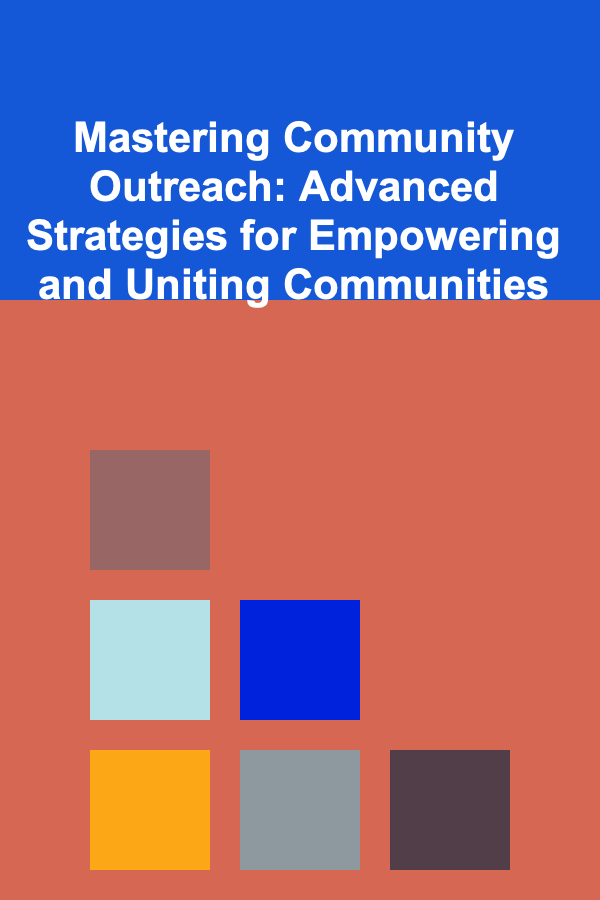
How to Craft a Killer Call-to-Action on a One-Page Website
ebook include PDF & Audio bundle (Micro Guide)
$12.99$6.99
Limited Time Offer! Order within the next:

In the world of web design, one-page websites have become increasingly popular due to their simplicity, concise structure, and focused approach. These websites aim to provide a seamless user experience with all necessary information presented in a single page, making it easy for users to navigate and take action. However, one of the most critical elements of any website, especially a one-page website, is the Call-to-Action (CTA). A well-crafted CTA can significantly impact conversion rates, guiding visitors towards a desired action, such as making a purchase, signing up for a newsletter, or scheduling a consultation.
But how do you craft a killer CTA that will not only capture the visitor's attention but also drive them to take action? In this article, we will explore the importance of CTAs, key strategies to make your CTA stand out, and best practices for designing an effective and persuasive CTA on your one-page website.
What is a Call-to-Action (CTA)?
A Call-to-Action (CTA) is a prompt or instruction on a website that encourages visitors to take a specific action. Typically, CTAs are placed in prominent positions on a website, such as buttons, links, or banners, and use action-oriented language to guide the user.
For example:
- "Buy Now"
- "Sign Up for Free"
- "Get Started"
- "Learn More"
- "Contact Us Today"
The primary goal of a CTA is to guide the user through the website and lead them toward a conversion, whether it be completing a purchase, subscribing to a newsletter, or engaging with the website in some other way. In the context of a one-page website, the CTA holds even more significance due to the streamlined structure and limited space available for interaction.
Why is the CTA Crucial for a One-Page Website?
One-page websites are designed with a single purpose in mind: to provide visitors with a clear and straightforward path to take action. Given the limited space and content, it's crucial that every element on the page serves a specific purpose, including the CTA. An effective CTA on a one-page website can:
- Increase Conversions: The right CTA can directly influence a visitor's decision to convert, whether it's making a purchase, signing up for a service, or contacting the business.
- Provide Clear Direction: A CTA gives users a clear next step, eliminating confusion and guiding them toward the action you want them to take.
- Enhance User Experience: With the focused nature of one-page websites, a CTA can enhance the overall experience by offering a seamless transition from one section to another, reducing friction in the user journey.
- Promote Engagement: A well-placed and engaging CTA encourages visitors to interact with your website, which can ultimately result in higher engagement and customer loyalty.
Thus, designing an effective CTA is an integral part of the one-page website's success.
Key Elements of a Killer CTA
Creating a successful CTA is not just about having a button that says "Click Here" or "Buy Now." Several elements come into play when crafting a CTA that encourages users to take action. These include:
1. Clarity of Purpose
A good CTA should be crystal clear in its intent. The user should instantly understand what action they are being asked to take. Avoid using ambiguous language or jargon. Instead, focus on being direct and specific.
For instance, instead of saying "Learn More," use "Get Your Free Consultation" or "Download Your Free Guide." These phrases immediately inform the user of what they will get in return for clicking the CTA.
2. Action-Oriented Language
The words used in your CTA are powerful tools that can influence user behavior. Verbs that convey action, urgency, or benefit are essential for motivating users to click. Common examples include:
- "Get": "Get Started," "Get Your Free Trial," "Get Access Now"
- "Claim": "Claim Your Discount," "Claim Your Offer"
- "Download": "Download the eBook," "Download Now"
- "Start": "Start Your Free Trial," "Start Learning Today"
- "Join": "Join Us," "Join the Community"
These verbs instill a sense of urgency and anticipation, prompting users to take immediate action.
3. Visual Appeal
The design of your CTA is just as important as the language used. A CTA that blends into the background or is difficult to find will not perform well. The following design tips will help make your CTA stand out:
- Use Contrasting Colors: Choose a color for your CTA button that contrasts with the rest of the page. This draws attention to the CTA and makes it easy for users to spot.
- Make the Button Clickable: Ensure that the CTA looks like a button (rounded edges, clear borders, etc.). Users are conditioned to click buttons, so make sure your CTA visually invites interaction.
- Add Hover Effects: Adding subtle hover effects like color changes or animation can make your CTA feel interactive and dynamic, encouraging users to click.
- Size and Placement: Your CTA should be large enough to catch the user's attention but not overwhelming. It should be positioned prominently on the page, particularly after key sections of content where the user is likely to take action.
4. Urgency and Scarcity
Incorporating urgency and scarcity into your CTA can be an effective way to encourage users to act quickly. Phrases like "Limited Time Offer," "Hurry, Only a Few Left," or "Offer Expires Soon" create a sense of urgency, prompting visitors to take action before it's too late.
For example:
- "Sign Up Today -- Limited Spots Available"
- "Claim Your Offer Before It's Gone"
- "Act Now and Save 20%"
Urgency taps into the fear of missing out (FOMO) and motivates users to act rather than delay.
5. Value Proposition
What's in it for the user? Your CTA should clearly communicate the benefit or value the user will receive by taking the action. By highlighting the reward or advantage, you make the CTA more compelling.
For example, instead of simply stating "Subscribe," you could say:
- "Subscribe for Exclusive Discounts"
- "Get Access to Free Resources"
- "Join Now for Early Bird Discounts"
The value proposition directly communicates why the visitor should act now.
6. Social Proof
Adding social proof to your CTA can help build trust and encourage users to take action. Social proof shows that others have already engaged with your brand, making it more likely that new visitors will follow suit.
Examples of social proof include:
- "Join Over 10,000 Happy Customers"
- "See Why Thousands of People Love Our Service"
- "Rated 5 Stars by 500+ Users"
By highlighting the success or satisfaction of others, you can persuade potential customers that they are making a wise decision.
7. Keep It Simple and Short
A CTA should be concise and easy to understand at a glance. Avoid long, complicated sentences or unnecessary jargon. Aim for brevity while still conveying the key message. The ideal length for a CTA is typically 2-5 words, though it can vary depending on the context.
For example:
- "Sign Up Now"
- "Get Started Today"
- "Shop Now"
- "Try It Free"
The goal is to make the CTA as straightforward and easy to act on as possible.
Best Practices for Crafting a CTA on a One-Page Website
Now that we've outlined the key elements of a successful CTA, let's explore how to apply them to a one-page website. One-page websites are unique in that they typically have a linear flow, where the user scrolls down the page to see different sections. Therefore, strategic placement and design of your CTA are crucial.
1. Multiple CTAs Across the Page
While the primary CTA might be at the top or bottom of the page, it's essential to include CTAs throughout the one-page website. As users scroll down, they may be presented with various sections that highlight different aspects of your offering, each of which should be paired with a relevant CTA.
For example, after the introduction, you might include a CTA that invites visitors to "Learn More" about your services. Further down, you could include another CTA prompting them to "Get Started" or "Sign Up for a Free Trial." By strategically positioning multiple CTAs, you ensure that users are always presented with a clear next step, regardless of where they are on the page.
2. Sticky or Floating CTAs
For one-page websites, using sticky or floating CTAs can be a great way to ensure that users always have access to the CTA, no matter how far down they scroll. A sticky CTA is a button or link that remains visible on the screen as the user scrolls, ensuring that the user always has easy access to the action they need to take.
For example, a "Sign Up Now" button could follow the user as they scroll through the page, making it impossible for them to miss.
3. Test and Optimize Your CTA
Testing is key to ensuring your CTA performs as expected. A/B testing is a valuable method to compare different versions of your CTA (such as different text, colors, or placements) and see which one leads to the best results. By continuously testing and optimizing, you can refine your CTA strategy and maximize conversions over time.
4. Complementary Content for Your CTA
The content surrounding your CTA should be complementary to the action you want the user to take. For example, if you want users to sign up for a free trial, ensure that the content above the CTA explains the benefits of the free trial and addresses any concerns the visitor might have.
Use the sections of the one-page website to provide information that builds trust and reduces friction, making it more likely that the user will click on your CTA.
Conclusion
Crafting a killer Call-to-Action on a one-page website requires a combination of clear and compelling language, strong design, strategic placement, and a focus on the user's needs. By following the best practices outlined in this article, you can ensure that your CTA not only grabs the attention of visitors but also guides them seamlessly toward taking action.
Remember, the success of your one-page website depends on how well you can turn visitors into leads, customers, or subscribers. Your CTA is one of the most powerful tools in your arsenal, so take the time to craft it carefully and optimize it for maximum impact. A well-designed and persuasive CTA will not only enhance your website's performance but will also contribute to your overall business goals.

How to Build a Checklist for Restocking Seasonal Products
Read More
How to Create a Checklist for Setting Up a Presentation Room
Read More
How to Design a Family Art Gallery with Kids' Creations
Read More
How to Perform Regular Maintenance on Your Washing Machine
Read More
How to Personalize Your LinkedIn Outreach to Improve Response Rates for B2B Partnerships
Read More
Mastering Community Outreach: Advanced Strategies for Empowering and Uniting Communities
Read MoreOther Products

How to Build a Checklist for Restocking Seasonal Products
Read More
How to Create a Checklist for Setting Up a Presentation Room
Read More
How to Design a Family Art Gallery with Kids' Creations
Read More
How to Perform Regular Maintenance on Your Washing Machine
Read More
How to Personalize Your LinkedIn Outreach to Improve Response Rates for B2B Partnerships
Read More